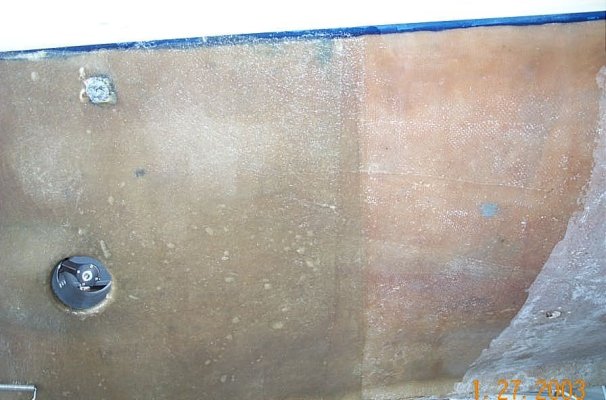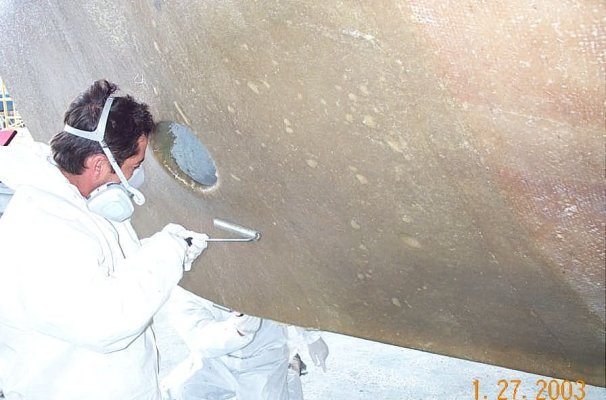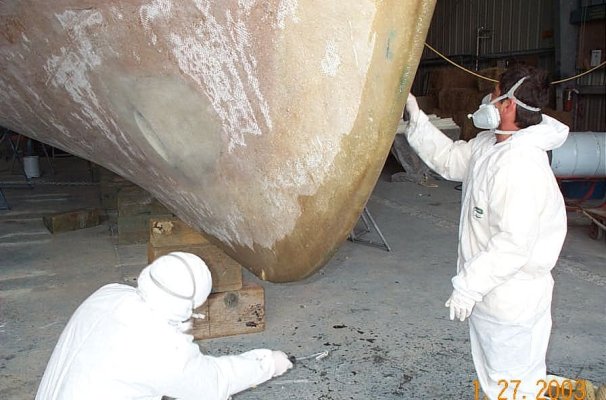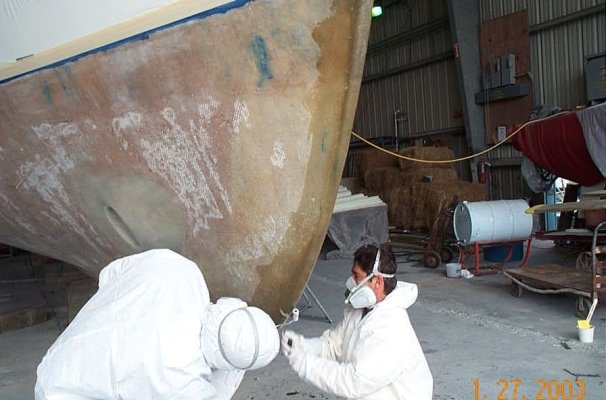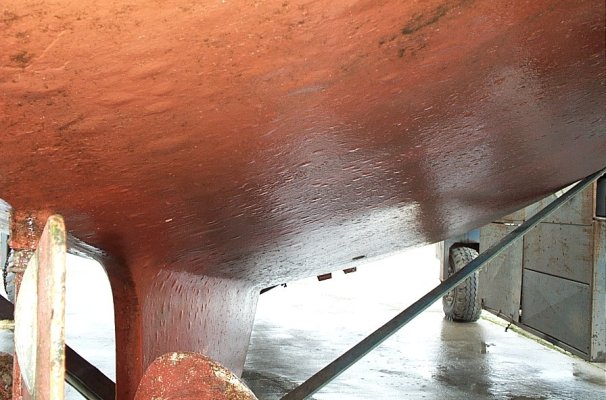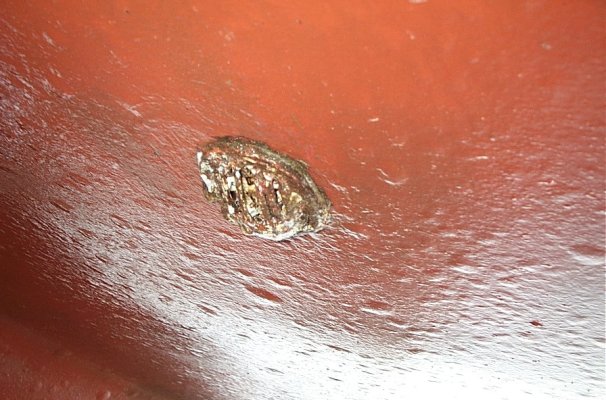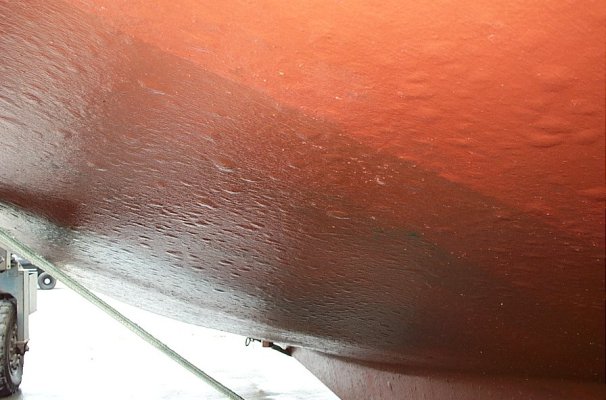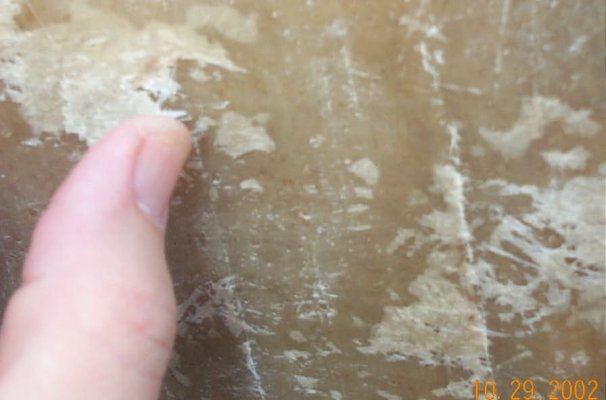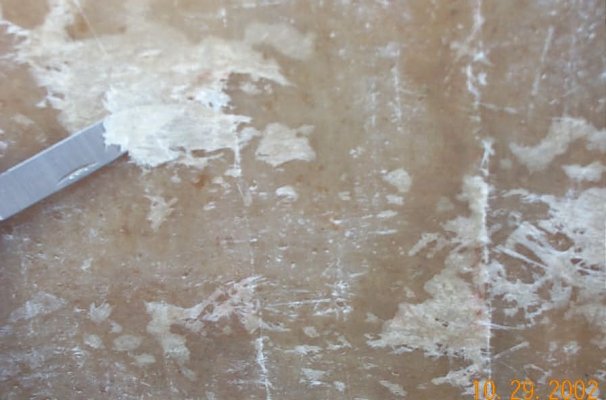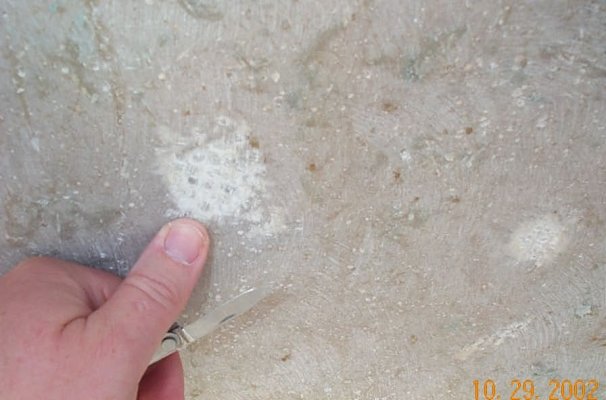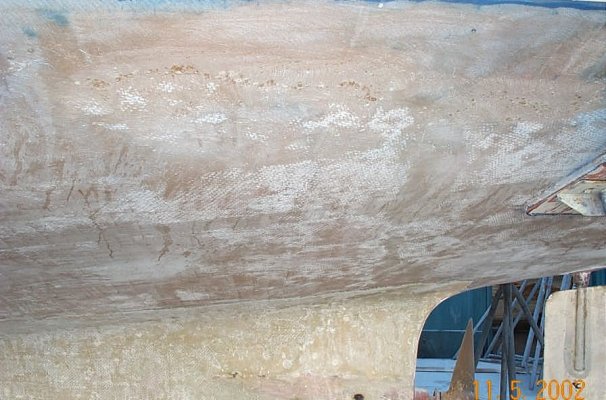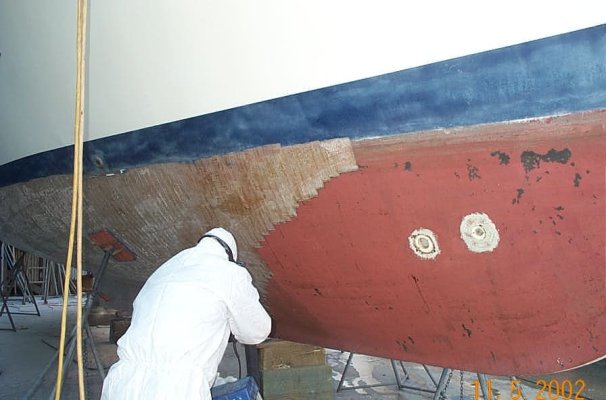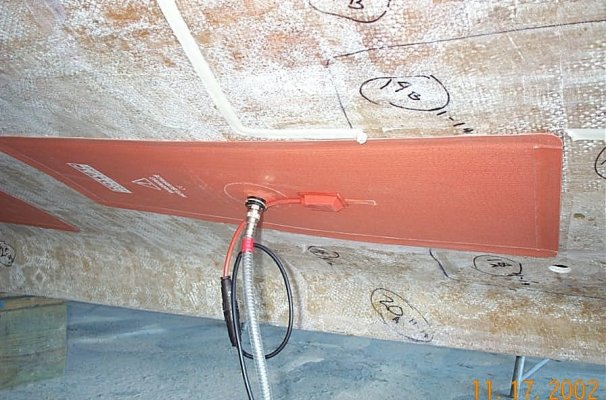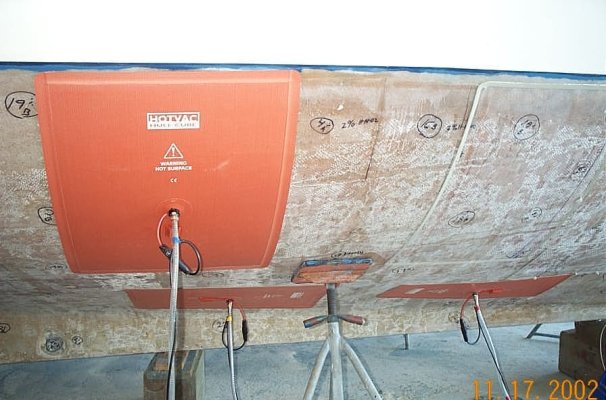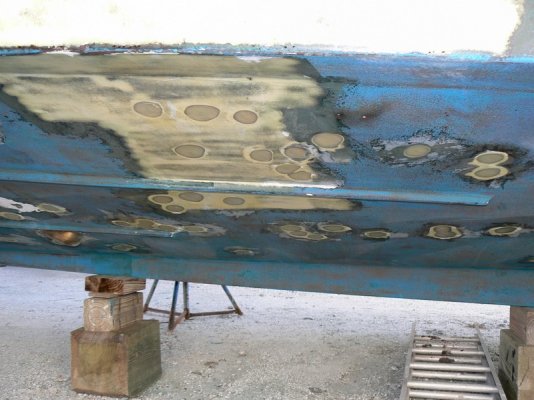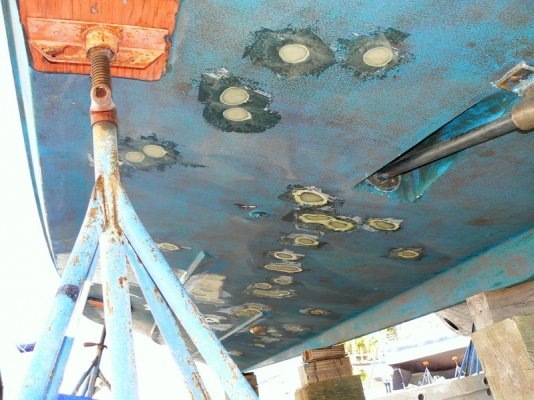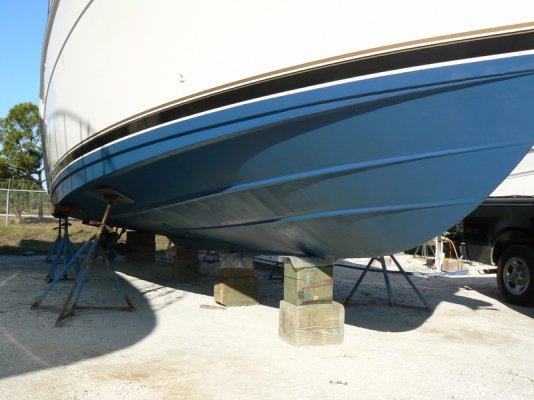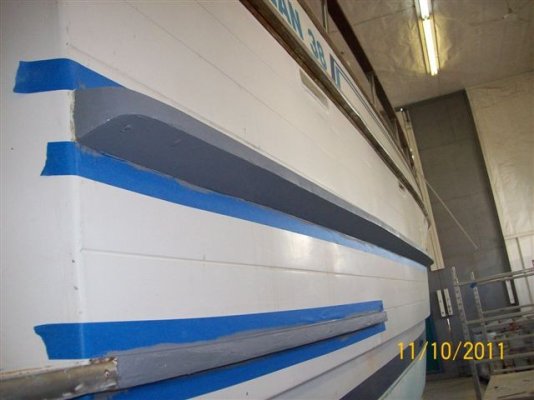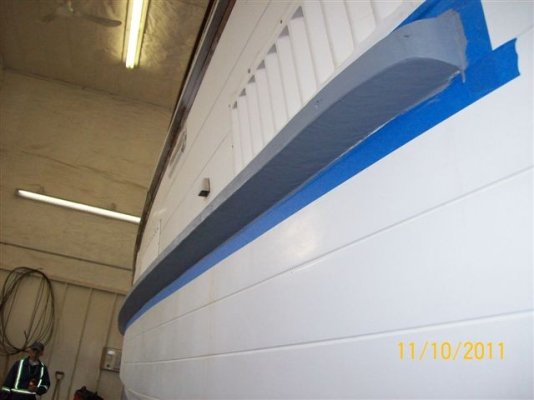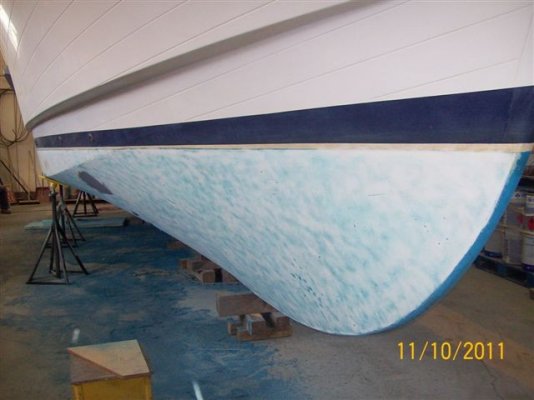Here's my report on what I did with my blister problem:
Well, now that Anastasia III is back in the water after about 5 months,
I can post the summary of work done and costs.
Boat: 1986 Krogen 42, hull #99. Had severe blistering when I purchased
her, and planned to do a hull peel and drying to cure this. After a lot
of research, I decided to use the HotVac system to dry the hull.
http://www.hotvac.com/. Seabrook Shipyard did all the work. This was
their first time using the HotVac system, so we all learned a lot. I am
very pleased with their work and the results.
Time: I took her into the yard on Oct. 21, 2002. They started peeling
the hull almost immediately, and started using the HotVac system around
November 15, 2002. While the HotVac folks said it would take a dwell
time of about 6 hrs at 100 degrees C to dry each section, we had to
operate at 80 degrees C because of the Airex PVC coring in my hull. It
took about 18 hrs. /section to dry the hull to acceptable levels. The
HotVac system uses three heat/vacuum pads at a time, each are about 2' x
3' or so. Several areas needed to have the application done 2 or three
times, and a few areas just wouldn't dry, so we had to grind out a few
places and re-fiberglass. The hull was finished drying sometime around
January 13, 2003, about two months. The pads were usually applied and
running 5-6 days a week, sometimes less if the weather didn't cooperate.
While the boat was in a shed, when warm fronts or rain would come
through, the hull would sweat and the pads couldn't get a seal.
We started relaminating new fiberglass on January 27, 2003. Started
applying the first barrier coat on February 24. 3rd. coat of barrier
were put on around Feb. 27. 1st. coat of anti-fouling put on around
March 8. New boot stripe painted around March 18. Final coat of
anti-fouling applied around March 20. A little touchup on bottom paint
on March 25 after lifting off the blocks onto the sled, then splashed on
March 26, a bit over 5 months after starting. I took a LOT of pictures
of all of this, and the automatic date stamp in the digital camera was
very useful, and allows me to give you these dates. I highly recommend
you use one of these for any major project you do.
After peeling and drying the hull, here is what we applied:
3 sessions of 1.5 oz. fiberglass mat with vinylester resin
2 coats Interprotect 1000 - High build epoxy primer
2 coats Interprotect 2000 - 2 part epoxy barrier coat
1 heavy sweep Interprotect VC tar2 - Watertight 2 part epoxy putty
3 coats Interprotect 2000 - 2 part epoxy barrier coat
2 coats antifouling - Petit Trinidad SR (4 gallons).
*
The relamination of new fiberglass was in addition to the bottom job,
and should be considered as an additional expense if you are doing
estimates. Labor was $7100 and materials were $3060. We had to do
this due to the amount of FG we ground off during the peel.
I prepped all the underwater metal except the prop with Petit's
underwater metal kit. This has a two-component acid etching primer
followed by two coats of a tie coat primer. I was disappointed with the performance of this stuff.* The main and thruster props were prepped by the yard with Interlux 260R primer.
Costs:
After doing my hull, Seabrook Shipyard has set their pricing as follows:
*
Complete blister job including hull peel: $250/ft. Sail, $300/ft. Power.
Powerboats are a bit more expensive due to the more complicated hull
shape. However, if you have a trawler with a sailboat shaped hull,
theyll probably charge you the sail price.
*
Use of the HotVac system to post cure (dry) the hull:
$200/day.
Estimated drying times based on a 40 hull would be:
Solid hull (no coring) 20 days.
Cored hulls 40 days.
Different types of coring requires different drying times, so these are only
rough estimates.
My hull was a little less expensive, since it was their first time, and
we were at the bottom of the learning curve.


